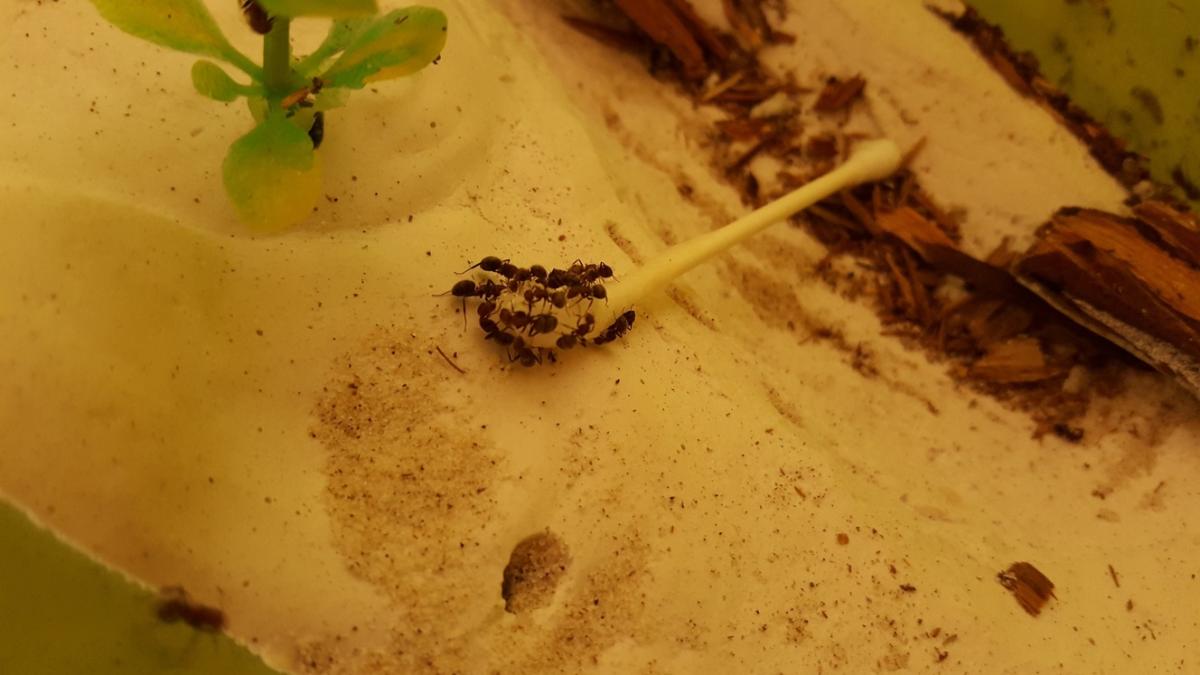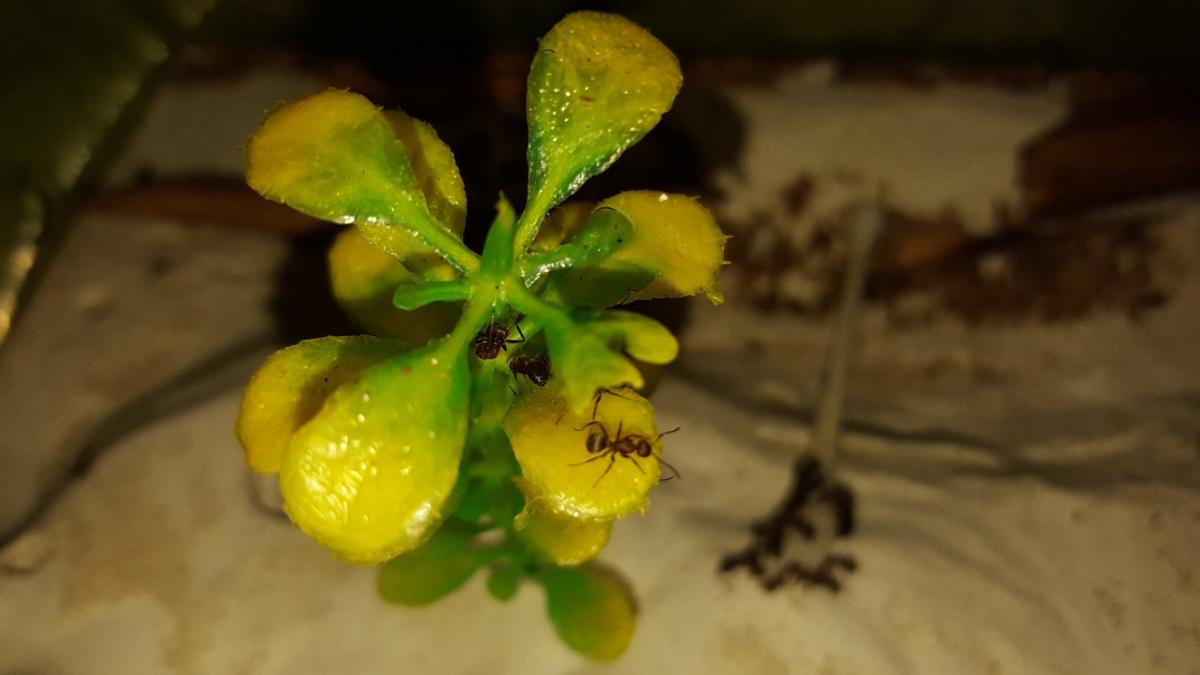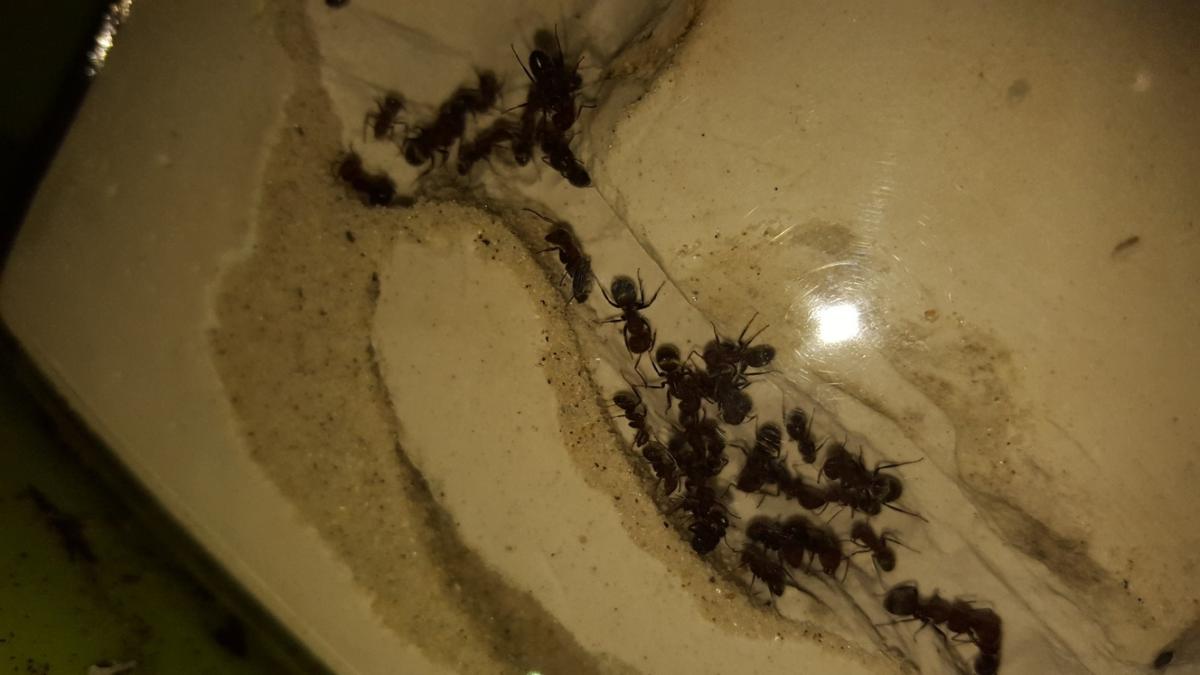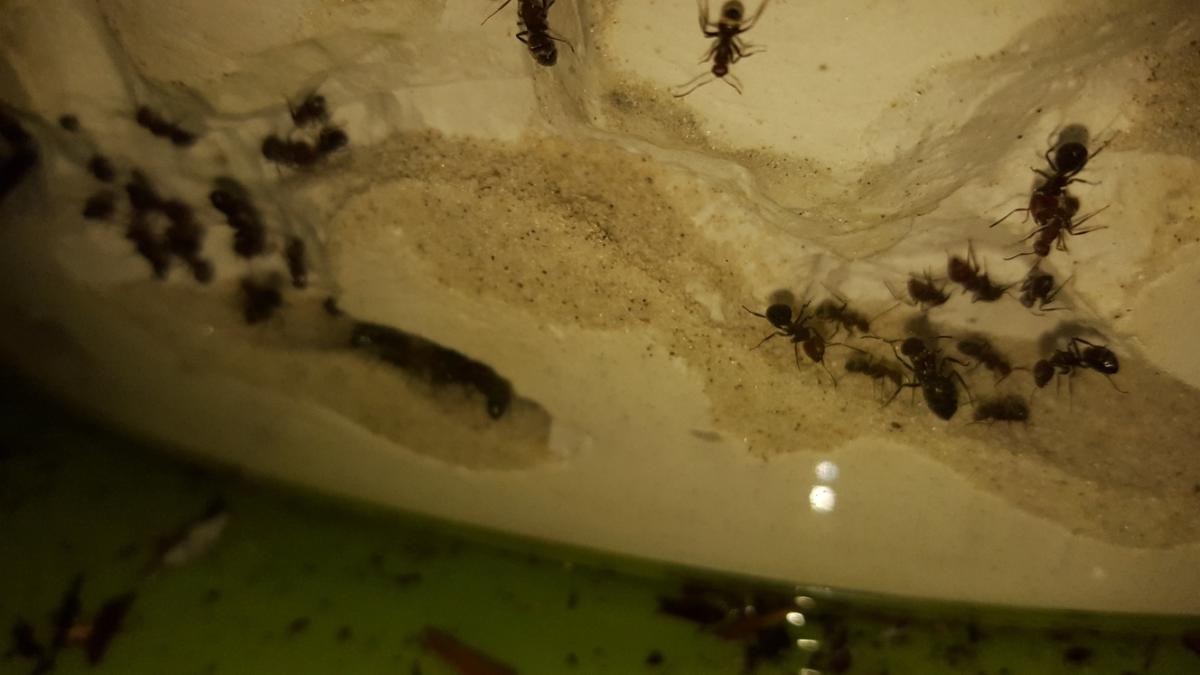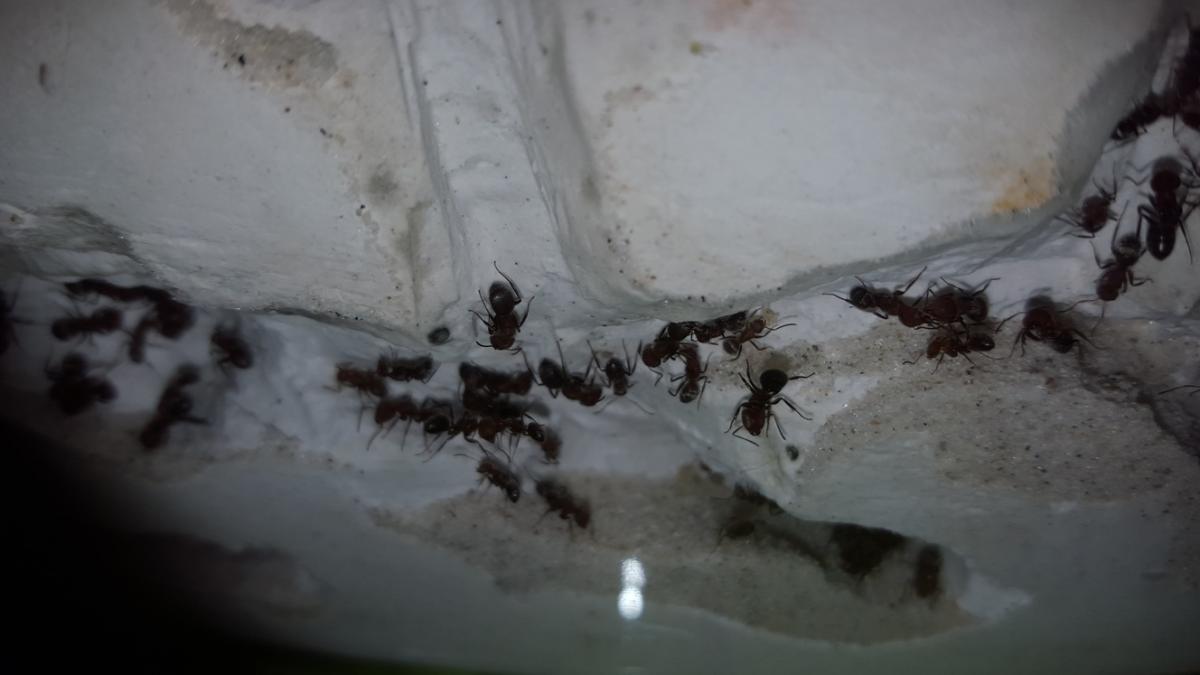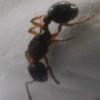Hi, I would love some help from the expert to identify this ants.
This is a colony I rescued from a log. They look like Camponotus,but smaller.
Location of collection: log found in a park in Merida, Yucatan Mexico.
Date of collection: January 11, 2016.
Length: small workers like 4mm, soldiers like 6mm and queen like 8-10mm.
Coloration, head and torax is like brown and gaster like black with a gray line.
Distinguishing characteristics: they are not aggressive, they prefer to run and hide if bothered. Sometimes when walking, they put their gaster below their body.
Nest description: rotted log.





